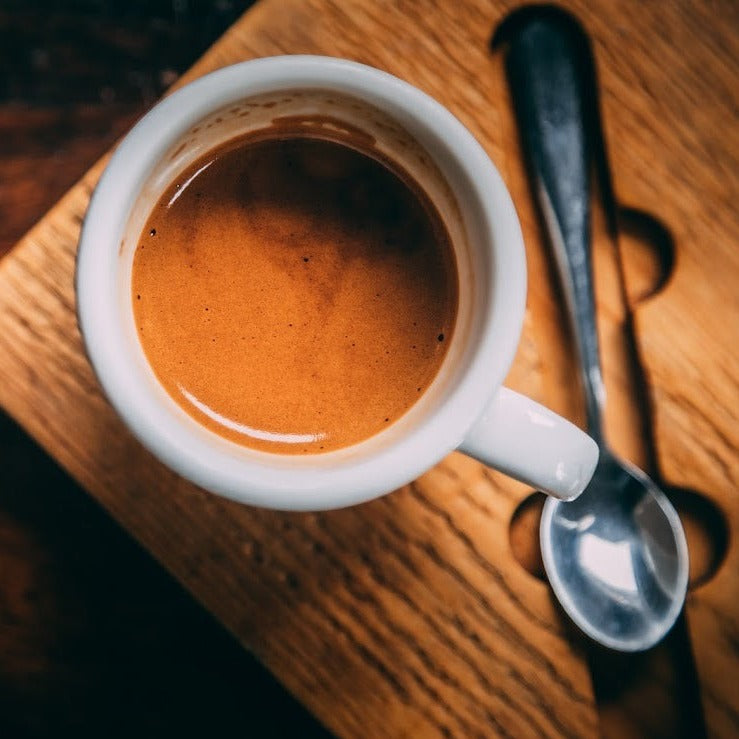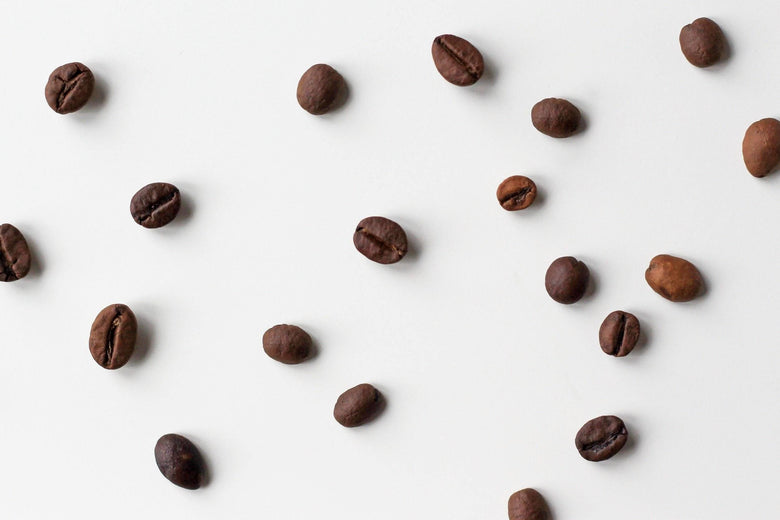Checking Out the Rich Flavors of Coffee Beans: a Deep Study Coffee and Blended Coffee Beans
When you check out the rich tastes of coffee beans, you reveal a complicated world where each variety brings its very own personality to your cup. Understanding the beginnings, refining approaches, and toasting methods can transform your coffee experience. As you browse with the art of espresso and the creativity behind blended coffees, you'll start to value the subtleties that make each sip unique. What you'll uncover next might transform the method you enjoy your morning mixture.
The Beginnings of Coffee Beans: Exploring Terroir and Taste Profiles
When you take a sip of coffee, you're not simply enjoying a beverage; you're experiencing a rich tapestry of tastes shaped by the beans' origins. Each area creates special taste profiles affected by elevation, soil, and environment. Beans from Ethiopia commonly burst with brilliant, fruity notes, while those from Colombia often tend to use a well balanced, nutty sweetness.
As you discover various origins, you'll see how terroir-- the ecological aspects influencing a crop-- plays a crucial duty - Single Origin Espresso. The same coffee range can taste significantly various depending on where it's grown
When you think about these variables, you start to appreciate the complexity behind your cup. Each sip informs a tale of the land and the farmers that supported the beans. Next time you indulge, believe regarding the trip your coffee took prior to it reached your hands, and appreciate those elaborate flavors that show its beginning.
Understanding Coffee: The Art and Scientific Research Behind the Mixture
When you think of coffee, it's not practically the solid taste; it's also about the strategies that bring it to life. Recognizing just how various preparation methods influence preference can transform your brewing experience. Allow's check out the ins and outs of espresso preparation and reveal the special flavor profiles that make each mug unique.
Espresso Prep Work Methods
Espresso preparation is both a science and an art, incorporating exact techniques with a deep understanding of coffee. To begin, you'll wish to choose premium, freshly baked beans and grind them finely for perfect extraction (Single Origin Espresso). The work size is essential; as well coarse, and your coffee will be weak, also fine, and it'll be bitter
Following, tamp the premises evenly in the portafilter to assure uniform removal. When you lock it right into the maker, aim for a developing temperature in between 190 ° F and 205 °
F.As you pull the shot, expect the ideal removal time-- around 25-30 secs. The result needs to be a rich, luscious espresso with a lovely layer of crema on top. With technique, you'll master these methods.
Flavor Accounts Discussed
The world of espresso uses a rich tapestry of flavor accounts that can boost your coffee experience. Light roasts usually showcase brilliant level of acidity and lively tastes, while dark roasts existing deeper, bolder tones.
Understanding these accounts aids you pick the appropriate coffee for your taste buds. Explore various blends can reveal unexpected combinations. For instance, a well-crafted blend could integrate the intense notes of an Ethiopian bean with the abundant, chocolatey touches of a Brazilian bean. Welcome the trip of uncovering coffee's diverse tastes, and you'll change your coffee ritual into an exciting journey.
Handling Techniques: How They Impact Flavor and Aroma
While it could appear that the origin of coffee beans is one of the most substantial element in determining their taste and scent, the handling techniques used post-harvest play a similarly crucial function. You'll find that these techniques can substantially change the last taste account of your cup.
For example, the washed process removes the fruit from the beans prior to fermentation, typically resulting in a cleaner, brighter taste. On the other hand, the natural procedure leaves the fruit intact throughout drying, causing a sweeter, fruitier account.
Other approaches, like honey processing, strike a balance, enabling some fruit mucilage to remain, giving an one-of-a-kind intricacy.
Each processing method communicates with the beans' integral attributes, boosting or silencing particular tastes and fragrances. So, when you sip that coffee or blended coffee, keep in mind that the trip from cherry to mug is influenced not just by beginning yet also by exactly how those beans were refined.
Roasting Strategies: Unlocking the Complete Possible of Coffee Beans
Roasting methods are important for disclosing the full capacity of coffee beans, as they change raw, eco-friendly beans right into the fragrant, flavorful coffee you delight in. The selection of toasting approach-- light, tool, or dark-- considerably affects taste profiles. Light roasts protect the beans' all-natural level of acidity and fruity notes, while medium roasts equilibrium sweet taste and splendor. Dark roasts, on the various other hand, emphasize bold, smoky flavors.
A slower roast at reduced temperature levels permits for intricate flavors to develop, while a quicker roast can intensify anger. By grasping these techniques, you'll disclose a world of taste, raising your coffee experience to brand-new elevations.
The Magic of Blended Coffee: Creating One-of-a-kind Flavor Experiences
Creating an one-of-a-kind flavor experience with combined coffee can transform your early morning ritual right into an expedition of taste. By incorporating different beans from various regions, you can expose a symphony of tastes that elevate your mug to brand-new heights. Each mix offers an unique profile, balancing level of acidity, body, and sweetness to create something absolutely special.
When you pick a blend, you're not simply picking a coffee; you're choosing a trip across varied landscapes and societies. Exploring with various combinations enables you to uncover your personal faves, whether you delight in fruity notes or abundant, chocolatey undertones.

Tasting Notes: Recognizing the Nuances in Your Mug
As you drink your coffee, you could notice a spectrum of tastes dancing on your taste, each revealing the ins and outs of the beans. You might taste the bright acidity similar to citrus or the deep, rich notes similar to dark delicious chocolate. The sweetness might stimulate honey or sugar, balancing the general account wonderfully.
Take note of the body of the coffee-- does it really feel light and airy, or is it complete and luscious? The coating, also, offers clues; a remaining aftertaste might mean nuttiness or flower touches.

Do not neglect to discover the special features of various origins, as each region imparts distinctive tastes - Single Origin Espresso. As an example, Ethiopian coffees often existing fruity notes, while Colombian beans could display a much more rounded sweet taste. By identifying these subtleties, you'll strengthen your appreciation for each and every mug, raising your coffee experience to new elevations

Developing Techniques: Maximizing Flavor Removal for each Bean
When you explore the different brewing approaches, you'll find that each technique can significantly affect the taste profile of your coffee. From French press to pour-over, each technique extracts various compounds, improving or muting certain notes. As an example, making use of a French press enables oils to stay in the mixture, producing a richer preference, while pour-over highlights clarity and brightness.
Temperature and grind size additionally play necessary roles. A coarser work works best for chilly mixtures, while a fine grind is excellent for coffee. Explore water temperature-- between 195 ° F and 205 ° F-- can reveal concealed tastes, too.
Don't forget regarding soaking time; a fast extraction can cause sour notes, while over-extraction might yield resentment. By readjusting these variables, you can make best use of flavor extraction and genuinely elevate your coffee experience. Take pleasure in the trip of discovering what method finest matches your palate!
Frequently Asked Concerns
What Is the Suitable Water Temperature Level for Developing Coffee?
The perfect water temperature for developing coffee's in between 195 ° F and 205 ° F. If you make use of water that's too hot, you'll over-extract flavors; as well cool, and you will not extract enough. Go for that wonderful area for the ideal brew!
How Does Grind Size Impact Coffee Flavor?
Grind size substantially affects coffee flavor. Finer grinds extract a lot more tastes and oils, causing a bolder preference, while coarser grinds return a lighter taste. Readjusting work dimension helps you achieve your preferred coffee go to this website profile.
Are There Health And Wellness Conveniences Linked With Alcohol Consumption Coffee?

What Is the Difference Between Arabica and Robusta Beans?
Arabica beans are smoother and sweeter, frequently featuring fruity tastes, while important source robusta beans are more powerful with a bitter preference and greater high levels of caffeine material. You'll discover these differences in fragrance and developing experience.
Exactly How Can I Store Coffee Beans for Freshness?
To store coffee beans for quality, maintain them in an airtight container, far from light, warmth, and moisture. You'll maintain their taste longer if you just grind what you need right prior to developing.
Discovering the Rich Tastes of Coffee Beans: a Deep Dive Into Espresso and Blended Coffee Beans.
When you explore the abundant flavors of coffee beans, you reveal an intricate world where each selection brings its own character to your mug.When you take a sip of coffee, you're not just delighting in a beverage; you're experiencing a rich tapestry of tastes shaped by the beans' origins.Roasting strategies are essential for revealing the complete possibility of coffee beans, as they change raw, environment-friendly beans into the fragrant, tasty coffee you enjoy.As you sip your coffee, you could discover a range of flavors dancing on your taste, each revealing the details of the beans.
Comments on “Matching Food and Desserts with SOE Single Origin Espresso”